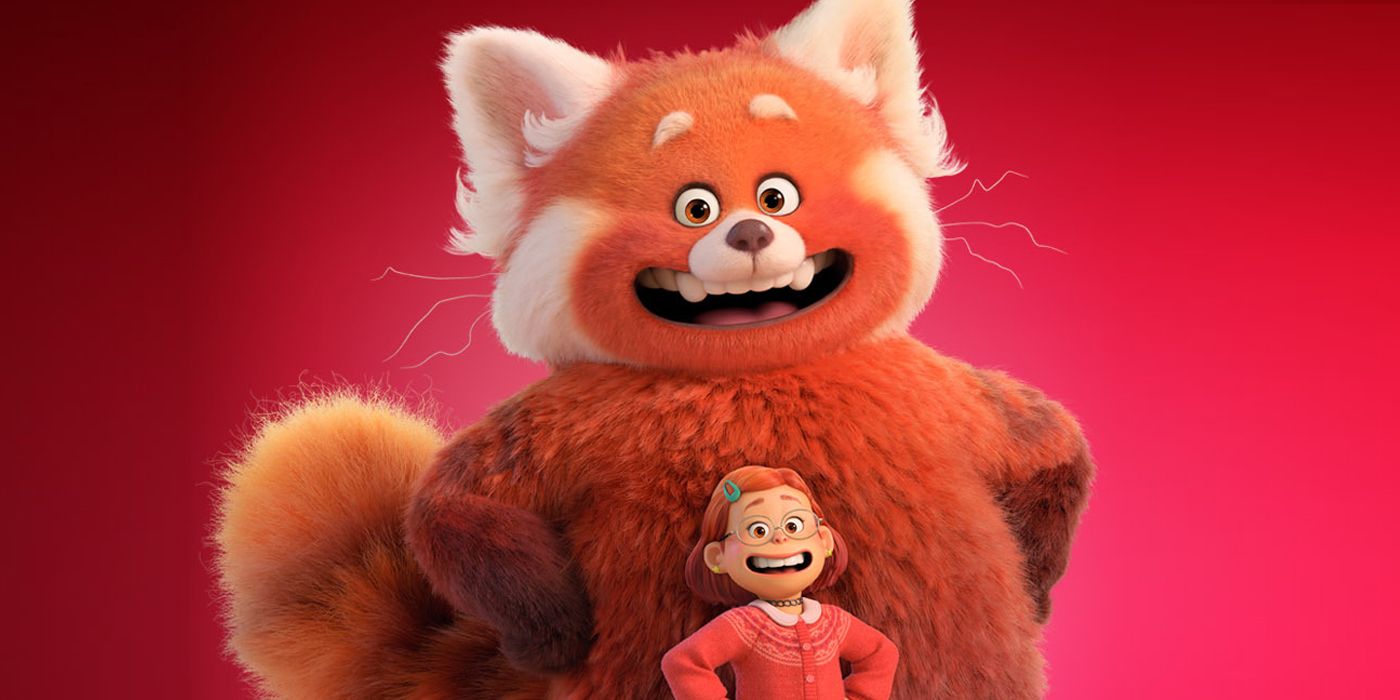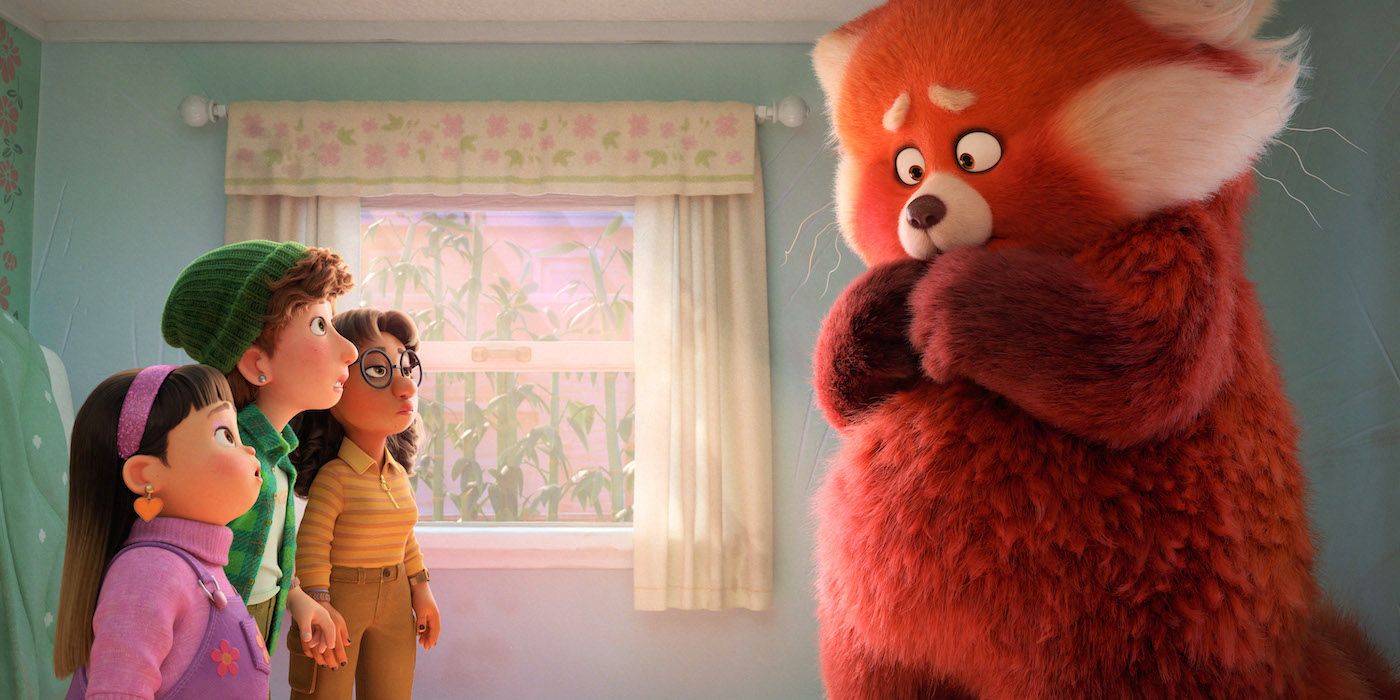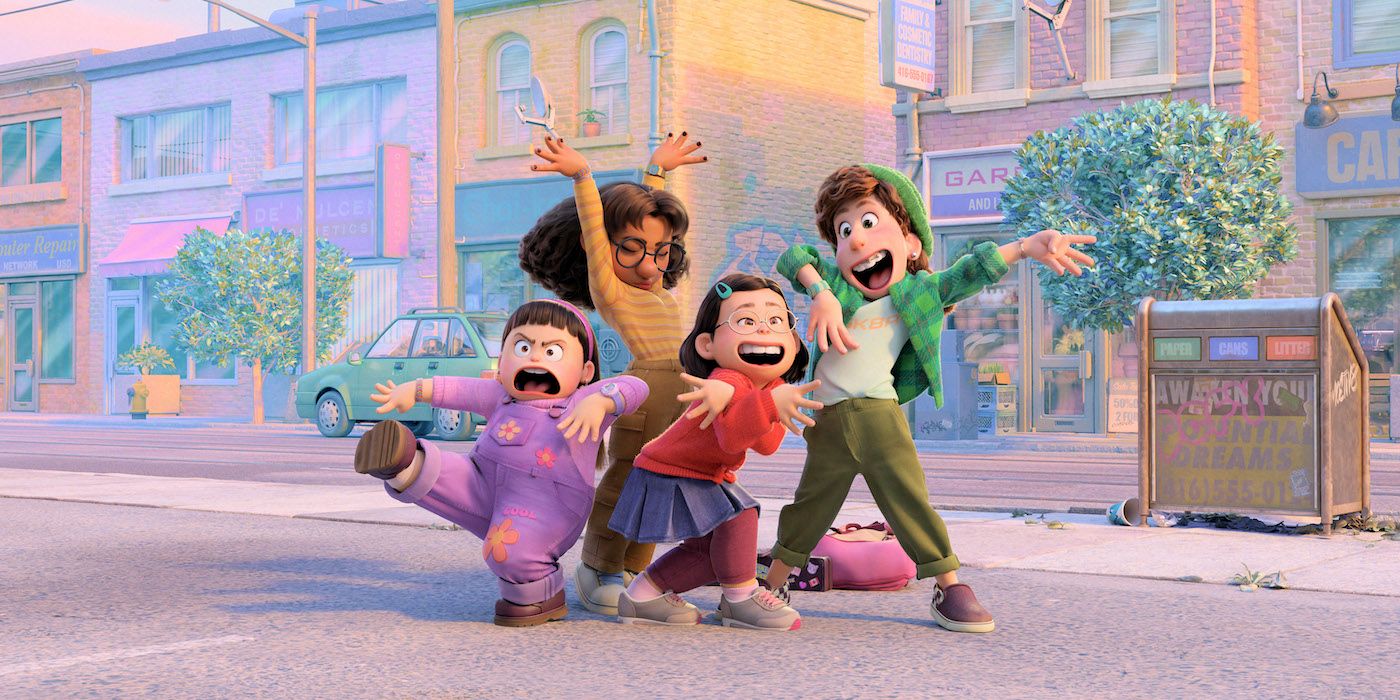Pixar likes to make its audience cry. Since the “When She Loved Me” montage in Toy Story 2, some of Pixar’s best films often center around mortality and shattering loss, whether in the Carl and Ellie montage in Up, Andy saying goodbye to his toys in Toy Story 3, or the loss of Bing Bong in Inside Out. Around the same time Pixar was becoming known as one of the best animation studios of all time, they were also becoming known as the studio that could make the viewer cry, be it through toys, fish, monsters, or robots. But quite often with these scenes and many others, Pixar intertwined the loss of youth with deep sadness, as if growing up inherently has to come hand-in-hand with mourning what was lost.
With Pixar’s latest film, Turning Red—and last year’s Luca—Pixar seems ready to shift away from the tears, but rather, show that they can have an impactful, moving story without the moments of deep sorrow. While Pixar’s attempts to move away from these type of sadder stories has often led many to call films like Luca “lesser” Pixar films, instead of what they really are: ways for Pixar to expand their capabilities with varying tones, but still maintain the same amount of power. Turning Red, therefore, is a perfect example that Pixar can tell a charming, joyful story that can be affecting, without the dour notes.
From Domee Shi, the Oscar-winning director of the Pixar short Bao, Turning Red follows Meilin Lee (Rosalie Chiang), a thirteen-year-old Chinese-Canadian overachiever who starts the film by saying that the #1 rule in her family is to honor your parents. While Meilin loves making her family proud and working at the family temple, she’s also a teenage girl that wants to hang out with her friends and fawn over the boy band 4*Town (set in the early 2000s, Turning Red absolutely nails the boy band aspect, with music written by Billie Eilish and Finneas O’Connell). One morning, Meilin discovers that when she gets too excited, she turns into a giant red panda, a blessing/curse that has been passed down through her family. Meilin was already struggling to balance the two sides of herself, but this red panda situation makes her life understandably even more difficult.
With Bao, Shi showed the difficulties of a child moving into adulthood from the parent’s perspective, and with Turning Red, she shifts the focus on telling the difficulties of growing into adulthood from the child’s perspective. Turning Red is hitting on all sorts of topics that young teenagers have to deal with—such as menstruation, becoming an adult while not losing who you are, and the struggle of trying to become yourself while also wrestling with maybe not becoming who your parents thought you would turn out to be—but with a lightness and care that doesn’t undercut the importance of these issues or how tough this period of life is for a kid. Turning Red does a beautiful job of balancing the delight and terror of becoming your own person outside the family you were raised in.
While past Pixar films have certainly felt personal to the filmmakers creating the movie, Turning Red’s narrative feels distinctive to Shi, an idiosyncratic story that is unique to her own experiences. Shi was a teenager in the early 2000s, is also Chinese-Canadian, and her experience with Bao shows that this bond between parents and their children is immensely important to her. As great as they are, Pixar films can often seem like a cool concept that could be handled with varying degrees of success by any number of filmmakers. But Turning Red doesn’t feel like it could come from anyone else. Shi—who also co-wrote the screenplay with Julia Cho—creates a story that has such a prominent voice, yet remains deeply relatable. Much in the way Pixar previously embraced animation auteurs like Andrew Stanton, Pete Docter, and Lee Unkrich, Shi has a style of her own that simply couldn’t be replicated.
Also a huge part of the irresistible world Shi and Cho have created is its incredible voice cast. Chiang is immediately brilliant as Meilin, a ball of energy that rapidly becomes plagued with insecurities. Chiang makes this character an endearing mess of emotions that always feels real—even when she becomes a gigantic red panda. Integral to this character is Meilin's friends, played by Ava Morse, Maitreyi Ramakrishnan, and Hyein Park. This support system pushes Meilin in just the right ways, helps her deal with her newfound situation by giving her support and unconditional love, while each character also is hilarious in their own unique way. Like Meilin's family, her friends want the best for her and wants to support Meilin's dreams, even if they may make her relationship with her family more strained than it ever had been before.
But naturally, the core of Turning Red is family, and the key to this dynamic is Sandra Oh as Meilin's mother, Ming. Oh arguably has to balance the most through her performance, varying from caring mother to an overbearing monster at times, but no matter what aspect of Ming she’s showing, that desire for her daughter to do what’s best always shines through. While he doesn’t have quite as much to do, Orion Lee as Meilin's father, Jin Lee, also gives a small but wonderful performance that gives Turning Red just the right amount of emotional heft the film needs in the third act.
Pixar has shown us time and time again that they know exactly how to push the right buttons to move us, to make us cry, to devastate us. But what Turning Red is doing might be even more impressive, a bright story that doesn’t skimp on the moving sentiments, but provides these emotions in a lovely, fun, and largely optimistic story of self-discovery and the first steps into womanhood. Turning Red can do all this in a film packed with panda transformations, ridiculous boy bands, needy Tamagotchis, and absurd first crushes. Turning Red proves that a Pixar film can be cheery, positive, and light, while also leaving a touching and powerful impression.
Rating: B+
Turning Red comes to Disney+ on March 11th.



